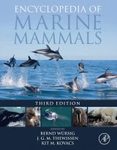By: Lauri J Pesonen(Editor), Johanna Salminen(Editor), Sten-Åke Elming(Editor), David Evans(Editor), Toni Veikkolainen(Editor)
646 pages, 100 colour & 60 b/w illustrations, tables
![Ancient Supercontinents and the Paleogeography of Earth Ancient Supercontinents and the Paleogeography of Earth]()
Click to have a closer look
About this book
Contents
Customer reviews
Biography
Related titles
About this book
Ancient Supercontinents and the Paleogeography of the Earth offers a systematic examination of the cratons of the Precambrian and the supercontinent cycle. Through detailed maps of drift histories and paleogeography of each continent, the book addresses questions about Earth's evolution, such as whether continental drift took place before Pangea, what was the drift velocity of the ancient continents, whether the continents collided, and whether Earth had supercontinents before Pangea. Additionally, the book will cover the methodologies used, and will apply those methodologies to testing the dipole hypothesis.
Structured clearly with consistent coverage for all cratons, Ancient Supercontinents and the Paleogeography of the Earth combines state-of-the-art paleomagnetic and radiometric data to reconstruct the paleogeography of the Precambrian Earth in the context of major ancient events, such as global glaciations, and summarize apparent polar wander paths (APWPs) of the continents. It is an ideal, up-to-date reference for geoscientists and geographers looking for answers to questions surrounding the continental evolution of Earth.
Contents
1. Introduction
2. The Drift History of the Western European Cratons
3. The Drift History of the North American Cratons
4. The Drift History of the African Cratons
5. The Drift History of the Indian Cratons
6. The Drift History of the Australian Cratons
7. The Drift History of the Siberian Cratons
8. The Drift History of the Smaller Cratons Worldwide
9. The Four Supercontinents
10. Conclusions
Customer Reviews
Biography
Professor (emeritus) Lauri J. Pesonen established the Solid Earth Geophysics Laboratory at the University of Helsinki. He is a member of the Finnish Academy of Science and Letters and has been the president of the Geophysical Society of Finland. He received the Knight Medal of the 1st Class Finnish Lion in 1995. The IUA nominated the asteroid 1979A as "Pesonen" according to his activities in studies of supercontinents and meteorite impacts. He initiated the Nordic Paleomagnetic Workshops and organized the Supercontinent Symposium in 2012 in Helsinki. He has published over 145 publications in international peer-refereed journals and was the main editor of the Special Issue on Precambrian Supercontinents.
Academy of Finland Research Fellow Docent Johanna Salminen is currently working on Precambrian supercontinents and on Neogene magnetostratigraphy. He received her doctoral degree at the University of Helsinki, Finland and did her postdoctoral research at the Yale University, USA. She has been a president of the Finnish Geophysical Society. She was awarded Early Career Scientist Award by the International Union of Geodesy and Geophysics (IAGA) in 2015.
Sten-Åke Elming is a professor in Geophysics and has built up the Paleomagnetic Laboratory at the Luleå University of Technology. He is a member and in the board of the Royal Swedish Academy of Sciences. He has been in the board for the Nordic Volcanologic Center in Iceland, in the geoscience committee of the Swedish Research Council and within the Nordic Paleomagnetic Working group, he has organized two workshops. Elming has published over 100 papers in peer-reviewed international journals.
Postdoctoral researcher Toni Veikkolainen has worked with various disciplines of geophysics and has a strong background in scientific computing. He received his doctoral degree at the University of Helsinki in 2014 with the topic on the dipole model of the geomagnetic field. He generated and currently maintains the global database PALEOMAGIA which has since 2013 given the researchers of Precambrian palaeomagnetism easy access to a wealth of numeric data. Currently, he studies the tectonic environment of Fennoscandian lithosphere using thermal and seismic information.
By: Lauri J Pesonen(Editor), Johanna Salminen(Editor), Sten-Åke Elming(Editor), David Evans(Editor), Toni Veikkolainen(Editor)
646 pages, 100 colour & 60 b/w illustrations, tables


































